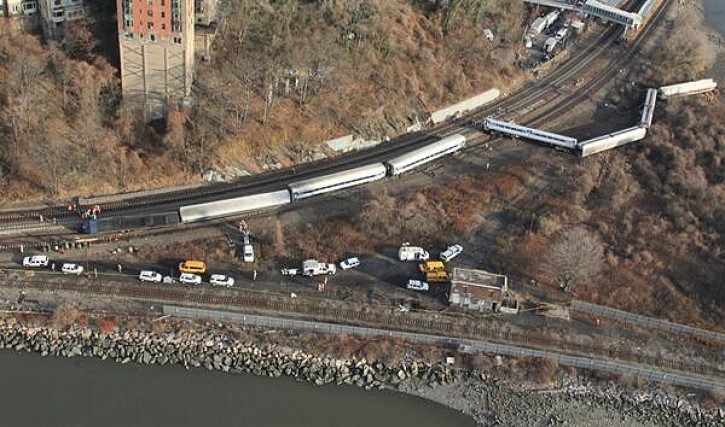 Bronx, NY – Sunday’s crash in the Bronx is the second passenger train derailment in six months for the rail service and presents Metro-North with another problem, even though the railroad’s train accident record had been improving.
Bronx, NY – Sunday’s crash in the Bronx is the second passenger train derailment in six months for the rail service and presents Metro-North with another problem, even though the railroad’s train accident record had been improving.
Subscribe to our Daily Roundup Email
— On Sept. 25, a feeder cable in suburban Mount Vernon, N.Y., failed, knocking out power for 12 days to Metro-North’s New Haven line, which carries 132,000 commuters daily.
— On July 18, 10 freight train cars hauling garbage derailed in New York City, and service was suspended.
— On May 28, track foreman Robert Luden was struck and killed by a passenger train in West Haven, Conn. The National Transportation Safety Board says he had requested a track section be taken out of service for maintenance, and the section was placed back in service too soon by a student traffic controller who didn’t have the required approval.
— On May 17, an eastbound train derailed in Bridgeport, Conn., and was struck by a westbound train. The accident injured 73 passengers, two engineers and a conductor.
The number of Metro-North train accidents has been falling for the past decade, according to a Federal Railroad Administration database. But injuries from those accidents are up dramatically this year, and accidents this year are on the rise.
— Metro-North train accidents peaked at 40 in 2006, but fell to 15 in 2010 and only six in 2012. Through August, the railroad had six train accidents, matching last year’s total.
— Train accident injuries on Metro-North are far higher this year than any of the past 10. Through August, 123 people were hurt in train accidents. The highest annual number in the past decade was seven in 2007.
— Train accidents on Metro-North caused by human factors peaked at seven in 2004, but fell to one or two per year for the past three years. Through August of this year, one was caused by human factors.
— Metro-North train mishaps caused by motive power or equipment also declined from 10 per year in 2004, 2006 and 2007 to four in 2010 and none in 2012. Through August of this year, there was one.
— Accidents on Metro-North caused by tracks also dropped, peaking at 16 in 2006. They fell to seven in 2011, three in 2012 and one through August of this year.
— Metro-North derailments peaked at seven in 2006, but dropped to five in 2011. There were three last year and three through August of this year.
— Metro-North train accidents caused by track obstructions peaked at 30 in 2006, but have fallen since then. There were 12 in 2010 but only three last year and three through August of this year.
This month, Metro-North’s chief engineer, Robert Puciloski, told members of the National Transportation Safety Board investigating the May derailment and Luden’s death that the railroad is “behind in several areas,” including a five-year schedule of cyclical maintenance that had not been conducted in the area of the Bridgeport derailment since 2005.
The NTSB issued an urgent recommendation to Metro-North that it use “redundant protection” such as a procedure known as “shunting” in which crews attach a device to the rail in a work zone alerting the dispatcher to inform approaching trains to stop.
The September disruption resulted in significant increases in highway traffic in Connecticut along the already busy Interstate 95 and Merritt Parkway, cost Connecticut’s economy $62 million and prompted criticism by officials of Con Edison, the New York utility that operates the failed cable.
